Clipart tagged: ‘rays’

Angle of Vision
"The angle under which the rays of light, coming from the extremities of an object, cross each other…

Chromatic Aberration
"Because of their greater refrangibility, the focus of the violet rays is nearer the lens than the focus…
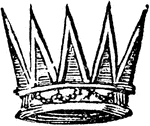
Eastern Crown
"EASTERN CROWN. A crown with rays proceeding from a circle, called by heralds an Eastern crown, is found…
Divider with Leaves and Sun Rays
This divider has leaves and small round kernels featured in a design on the sides. The center area has…
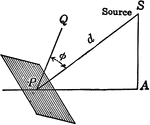
Illumination of a Surface When the Surface is not Perpendicular to the Source
Illustration modeling the illumination on a surface when the surface is not perpendicular to hte rays…
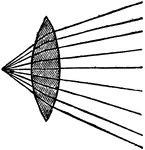
Converging Rays and a Double Convex Lens
"Thus the pencils of converging rays, are rendered still more convergent by their passage through the…

Diverging Rays from a Double Convex Lens
"If diverging rays fall on the surface of the same lens, they will, by refraction, be rendered less…

Rays of Light
"Rays of light are said to diverge, when they proceed from the same point, and constantly recede from…
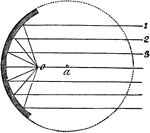
Focus of a Concave Mirror
"The focus of a concave mirror is the point where the rays are brought together by reflection." -Comstock…
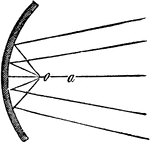
Convergent Rays in a Concave Mirror
"Thus, were the rays falling on the mirror parallel, the focus would be at a' but in consequence of…
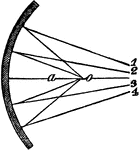
Divergent Rays in a Concave Mirror
"...be made obvious...where the diverging rays 1, 2, 3, 4 form a focus at the point o, whereas, had…

Rays Diverging from Beyond the Center of Curvature on a Concave Mirror
"When the rays diverge form a point at a distance from the mirror less than that of the principal focus,…

Concave Mirror with Image and Focus
"The focus of each point chose may be determined by tracing two rays from the point, and locating their…
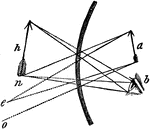
Object Within the Focus in a Concave Mirror
"...let us suppose the object a, to be placed before the mirror, and nearer to it than the principal…
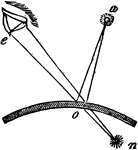
Convex Mirror
"Let us suppose that a, is a luminous point, from which a pencil of diverging rays falls upon a convex…
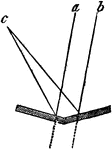
Plane Inclined Mirrors
"The incident rays, a and b, being parallel before they reach the reflectors, are thrown off at unequal…

Prism Spectroscope from the Late 19th Century
"...a tube with a slit at the further end through which the light enters, and at the other end a collimating…
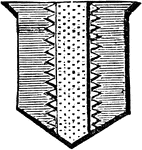
Radient
"Azure, a pale, or, radient. RADIENT. Any charge having rays or beams about it." -Hall, 1862

Radiometer
An instrument which serves to transform radiant energy into mechanical work. Have 4 vanes, with one…
Ray Pointing Down
A ray has one endpoint and extends indefinitely in the other direction. The ray in this illustration…
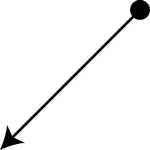
Ray Pointing Down and Left
A ray has one endpoint and extends indefinitely in the other direction. The ray in this illustration…
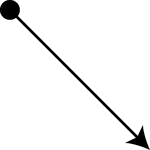
Ray Pointing Down and Right
A ray has one endpoint and extends indefinitely in the other direction. The ray in this illustration…
Ray Pointing Left
A ray has one endpoint and extends indefinitely in the other direction. The ray in this illustration…
Ray Pointing Right
A ray has one endpoint and extends indefinitely in the other direction. The ray in this illustration…
Ray Pointing Up
A ray has one endpoint and extends indefinitely in the other direction. The ray in this illustration…

Ray Pointing Up and Right
A ray has one endpoint and extends indefinitely in the other direction. The ray in this illustration…
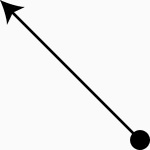
Ray Pointing Up and Right
A ray has one endpoint and extends indefinitely in the other direction. The ray in this illustration…
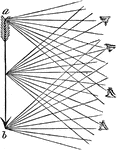
Pencils of Rays
"These pencils of rays not only flow from the points designated in the figure, but in the same manner…
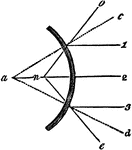
Divergent Rays
"From the surface of a plane mirror, parallel rays are reflected parallel; but the convex mirror causes…

Reflected Light
"The apparatus shown is used to prove that incident rays and reflected rays are equal." -Avery 1895

Explanation of Reflection
"Consider a beam of light as made up of a number of ehter waves moving forward in air and side by side,…
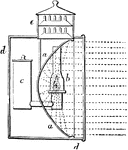
Parabolic, Reflector
A polished surface of metal, or any other suitable material, applied for the purpose of reflecting rays…
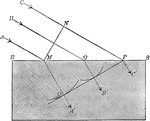
Explanation of Refraction
"Thus, when erher waves that constitute light are transmitted through glass, they are hindered by the…

Rose-en-Soleil
"The rose argent of the House of York, surrounded with rays, as of the sun."—Aveling, 1891

Definitions, Segment, Ray, Line
Illustrations of a segment, a ray, and a line that can be used when providing definitions.
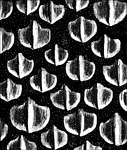
Placoid Scales of a Shark
These placoid scales are found in cartilaginous fishes. They are also called dermal denticles. These…
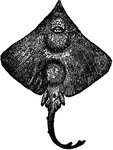
Skate
"Skate is the popular name for any individual of a section of the genus Raia, differing from the rays…

Direct Vision Spectroscope
"...an instrument which gives a spectrum when the source of the light is in a straight line with the…
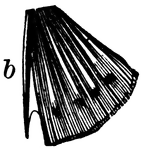
One Spine on the Ventral Fin of a Bony Fish
"A fin-spine; one of the unjointed and unbranched sharp bony rays of the fins, such as those the presence…

Ten Spines on the Fins of a Bony Fish
"A fin-spine; one of the unjointed and unbranched sharp bony rays of the fins, such as those the presence…

Three Spines on the Anal Fin of a Bony Fish
"A fin-spine; one of the unjointed and unbranched sharp bony rays of the fins, such as those the presence…
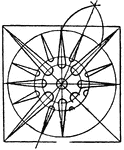
Greek Square Panel
The Greek square panel is found on the coffer of the Propylaea ceiling, the entrance to the Acropolis…
Refracting Telescope
"Suppose a, to be a distinct object, from which pencils of rays flow from every point toward the object…
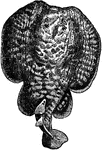
Torpedo
Torpedo is a group of rays, commonly called electric rays or torpedoes. It is the only genus in the…